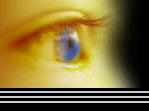Good
evening,
My name is Vrajesh Patel and my senior research topic is on the human eye.
I have chosen to do my project on the human eye because many people in my family as well as my friends suffer
from a variety of eye disorders. Also, I wanted to obtain an answer to an important
question that I have always pondered. This question is why a person with nearsightedness
can see both far and near objects with glasses, but the person with farsightedness cannot.
I hoped that throughout the course of this project, I would learn more about eye diseases
and also be able to explain them to other people. After completing my research,
I gained an understanding of the how the eye functions, disorders in the eye, and methods to cure those disorders. Learning these things will enable me to teach others as well. Different disorders that I learned while
doing this project are Nearsightedness, farsightedness, astigmatism, presbyopia and diabetic retinopathy.
The scientific name of Nearsightedness is Myopia. It occurs when light entering the eye focuses in front of
the retina rather than on the retina. In the nearsightedness, the cornea is steeper than that of the normal eye. Nearsighted
people typically see near things but have difficulty in seeing far away objects.
The scientific name of
Farsightedness is Hyperopia. It occurs when light entering the eye focuses behind of the retina. In farsightedness the cornea
is flatter than that of the normal eye. Farsighted people typically see things that are far away but have difficulty in seeing
by near objects.
Astigmatism is a refractive
error. The cornea of an eye with Astigmatism is oval like a football instead of spherical like a basketball, and it is smooth.
This kind of the cornea has both steeper curve and a flatter curve, and this cause light to focus on more than one point.
With astigmatism, one often sees blurred images.
Presbyopia is a refractive
error. A person who is affected by presbyopia often has difficulty in focusing the eyes for reading or close work. It usually
affect people aged forty years or above. With presbyopia, one loses ability and capacity of changing the lens and the cornea
as required focusing on an object. The presbyopia occurs suddenly as the eye loses flexibility.
Diabetes is a disease that causes many problems, but it is especially hard on the eyes and can lead to blindness
among adults. Diabetes is a condition in which there is improper regulation and use of glucose for energy. This occurs due
to a failure in the production of insulin. Diabetes patient can get diabetic retinopathy which leads to blurry picture.
I was able to learn more about my research topic by my product of job-shadowing an
ophthalmologist. Dr. Hasan Fatteh allowed me to shadow him at his private practice
office here in Augusta
as well as serve as he severs my mentor throughout this project. Dr. Fatteh also
was able to answer the question that I had always pondered about nearsightedness and farsightedness. He explained to me that it is not true for all the patients; it depends upon the eye of a patient. Job-shadowing allowed me to learn what an ophthalmologist does on a regular basis. I also gained first hand experience on the instruments used by the doctor to treat
various eye disorders. The instruments used are a corneal topographer (this machine
helps in measuring the curvature of the cornea and gives an approximate prescription number for eyeglasses), a phoropter (this
machine helps to obtain the prescription number for eyeglasses), and a tonometer (this machine helps in measuring pressure
inside the eye and consequently determines the probability of glaucoma). Some
other instruments are a slit lamp (this machine helps in seeing inside the eye straight through the cornea to the retina),
an ophthalmoscope (it helps to examine the retina and vitreous humor),
and the lasik process (there is only a laser ray that goes inside the eye and removes the cataract by lowering the pressure
inside the cornea). Since Dr. Fatteh served as my mentor, he evaluated my product
as well.
One major challenge that I faced in doing my senior project was learning to communicate in English properly. I have been in the United States
for only eight months and I have found it very difficult to speak and write grammatically correct in English without having
some help from others. Also, it was challenging to find an ophthalmologist to
shadow as well as serve as my mentor to do my senior product. Another problem
that I had to overcome was how to manage my time between my regular school work and working on my product.
There are many benefits that I have gained by doing this project. Most
importantly, I have been able to improve my speaking and writing skills in English.
Also, I learned to interact with adults on a professional level, as well as how various eye disorders are treated. Lastly, I benefited by understanding the value of time management and hard work.
Thank
you so much for your time and consideration. I am grateful for being given this
opportunity to learn more about the human eye, a topic that I have always been interested in.

